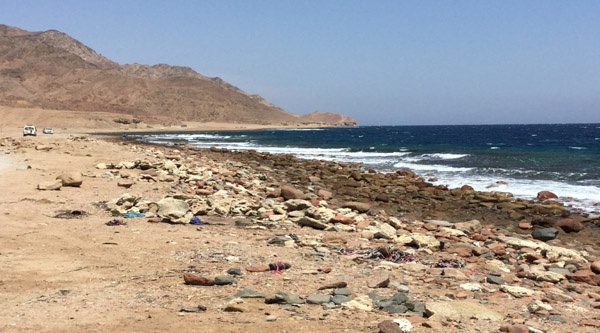Nabq Nature Reserve | Nabq National Park | Nabq Protected Area
4.2 / 5 20 ReviewsNabq
Nabq is located just 25km north of the main Sharm el Sheikh areas. This 600 km² marine reserves offer a unique opportunity to experience the nature at its best. The park stretches along the Gulf of Aqaba and is the largest coastal park in the area.
Nabq Protected Area is a nature reserve located on the eastern coast of the Sinai Peninsula in Egypt. The protected area covers an area of approximately 600 square kilometers and was established in 1992 to preserve the unique and fragile ecosystems found in the region.
The Nabq Protected Area is home to a diverse range of flora and fauna, including several rare and endangered species. The reserve is particularly notable for its mangrove forests, which are among the northernmost in the world, and for the coral reefs found offshore.
The area is also an important habitat for migratory birds, and it is recognized as an Important Bird Area by Bird Life International. In addition to its ecological value, the Nabq Protected Area is an important site for tourism and recreation, with activities such as hiking, bird watching, and snorkeling available to visitors.
With varying terrain, Nabq interiors are dotted with high chain mountains while its coast plays host to a five kilometer stretch of mangroves. This is the largest mangrove stand in the Gulf of Aqaba and the northernmost mangroves in the Indian ocean/Red Sea area. These are not just typical trees that grow out of the salt sea waters, it also plays a pivotal role for the surrounding ecosystem, acting as a natural nursery for small fish and crustaceans, providing nestling locations for birds and forming natural tsunami wave breakers. Mangroves are remarkable for having aerial roots that help aerate their submerged roots.
The park is of outstanding natural beauty sheltering a variety of ecosystems. The protected area is characterized by a number of important environmental systems like coral reefs, marine habitats (sea grass beds) and land creatures, large dense mangrove woods. It includes environmental systems of desert, mountain and valleys, and animals like deer, mountain goat, hyena, reptiles and a lot of migrating and resident birds beside invertebrates. Nabq protectorate contains 134 plant species, 6 of which are found only in Nabq, and the largest single stands of Arak bushes in the Middle East.
One of the largest populations of Gazelles in South Sinai is found in Nabq. These are often seen at sunset in the vicinity of the dunes. Nubian Ibex can be found in the mountain areas and Hyrax thrives in Wadi Khereiza. Herons, Spoonbills and Ospreys have sustainable breeding populations in and around the mangroves.
Nabq is an amazing site for diving and snorkeling as the coral reefs are extremely rich there. Reef profiles and therefore community structure are different from reefs in the Ras Mohammed National Park.
Ras Tantoor and Nakhlet el Tal provide easy access to excellent viewing of these and other underwater wonders.
A large part of Nabq was created by alluvium deposited by floods flowing to the sea through mountain wadis, forming the catchments of Wadi Kidd. A rare and beautiful Arak bush, characterized by its convoluted dune stabilizing root system, grows at the mouth of Wadi Kidd. Bedouins have traditionally used Arak as a medicinal plant and its twigs as toothbrushes.
If you are a nature lover but not that into trees, Nabq is an ideal place for bird watching. Located right on several species migration route, some stop for a break, while others call the place home. Grab your binoculars and look out for herons, plovers, gulls, terns and the Red Sea endemic White-Eyed Gull with its vibrant yellow legs, blood red bill and a crescent-like white ring around the eyes.
Locals are part of the grand ecosystem as well, and in Nabq there are two main permanent Bedouin settlements; the villages of Khereiza and El Gharqanah. Please be respectful to their conservative culture.
